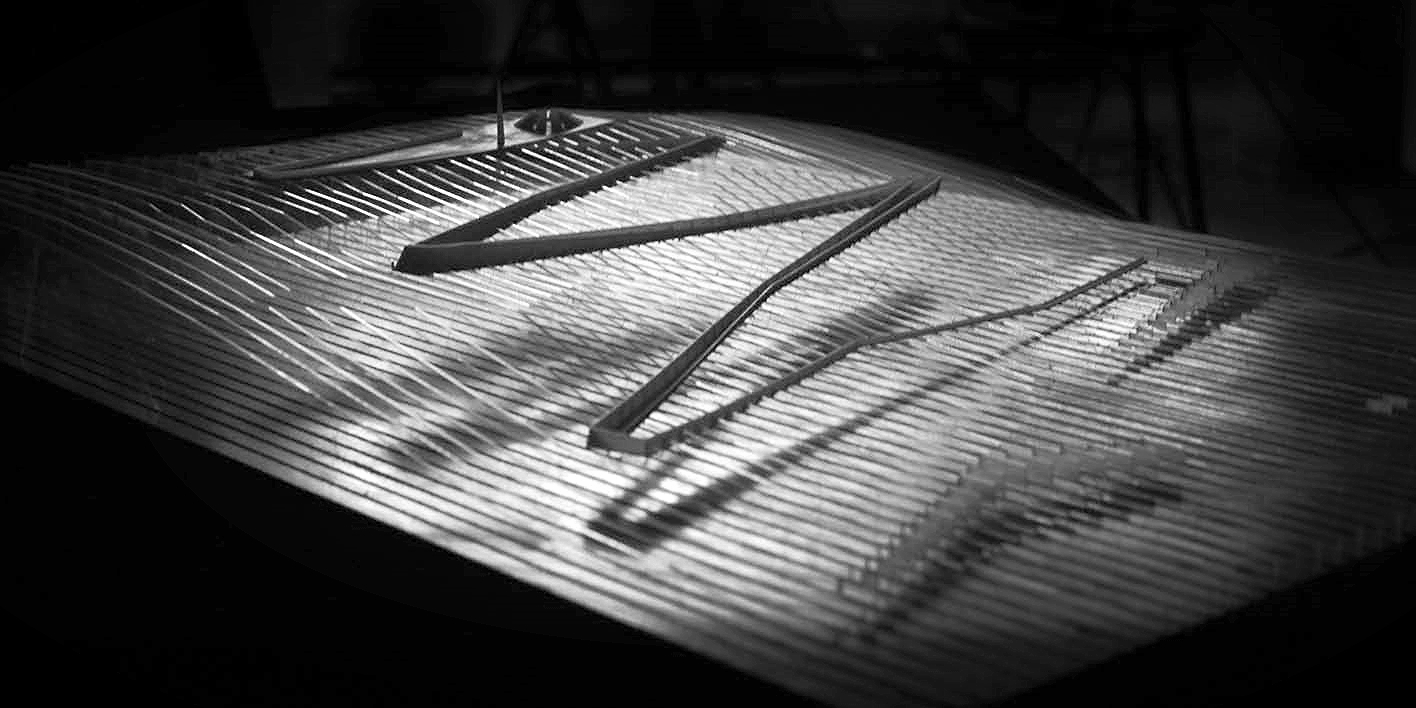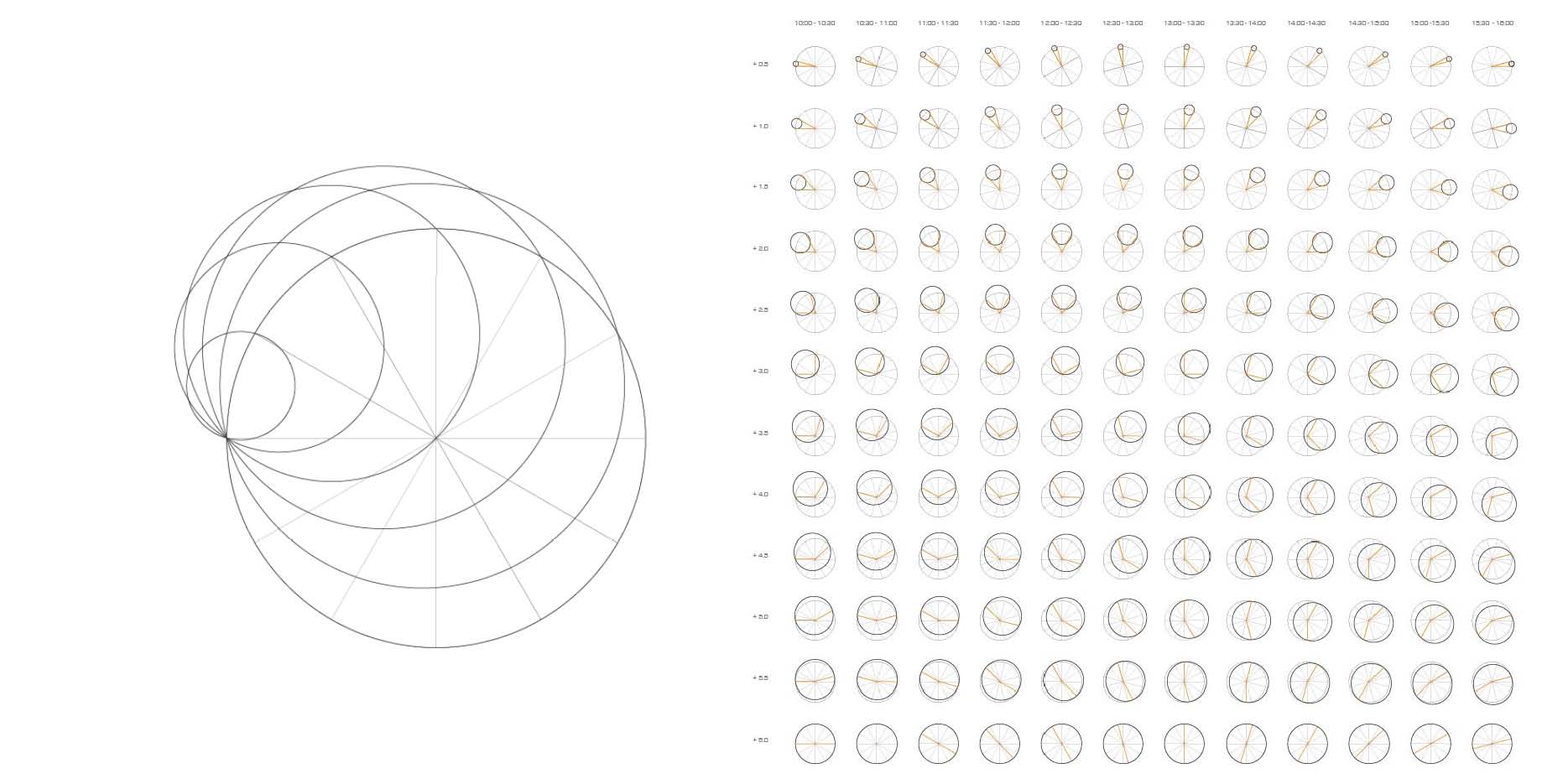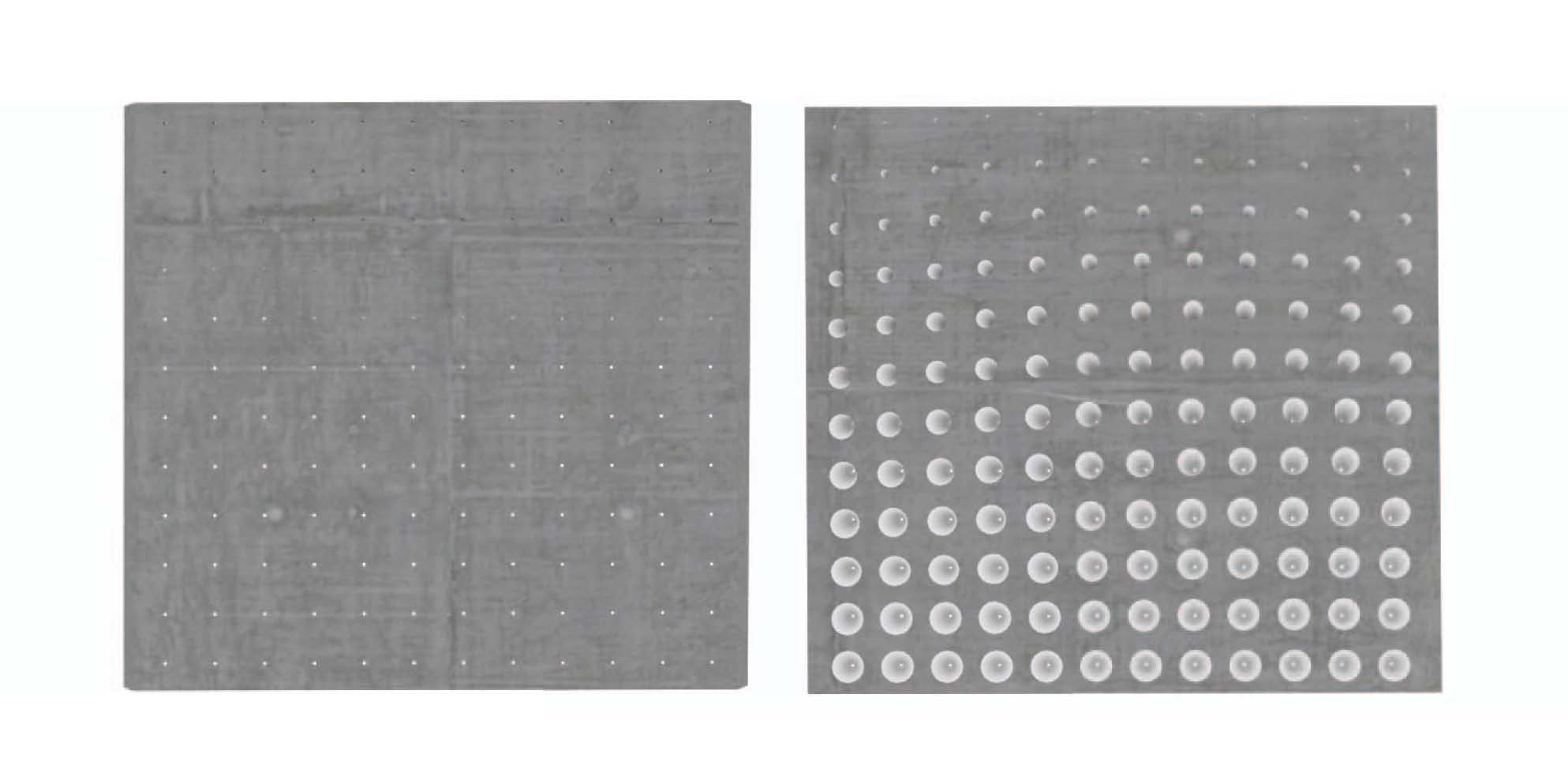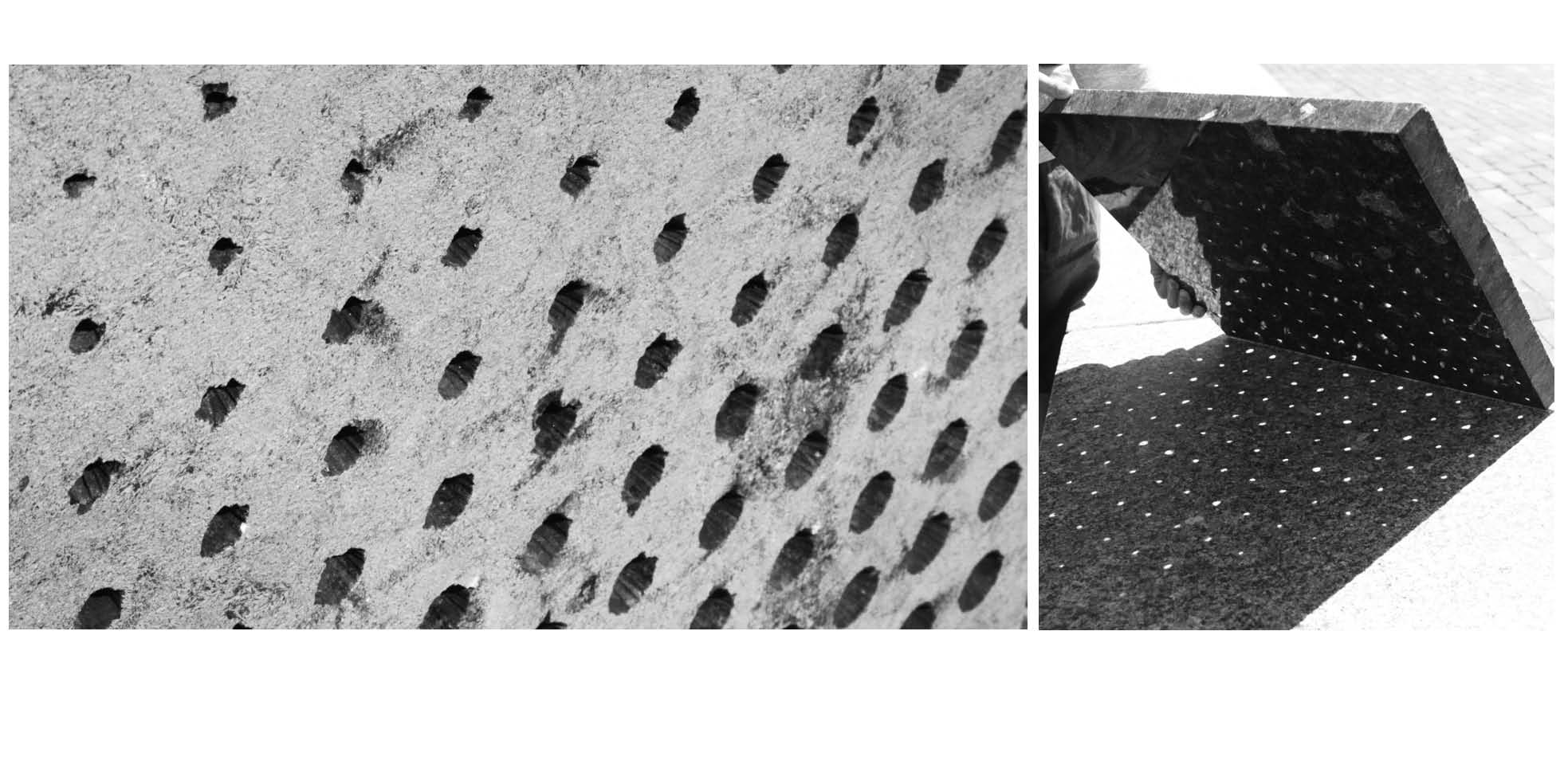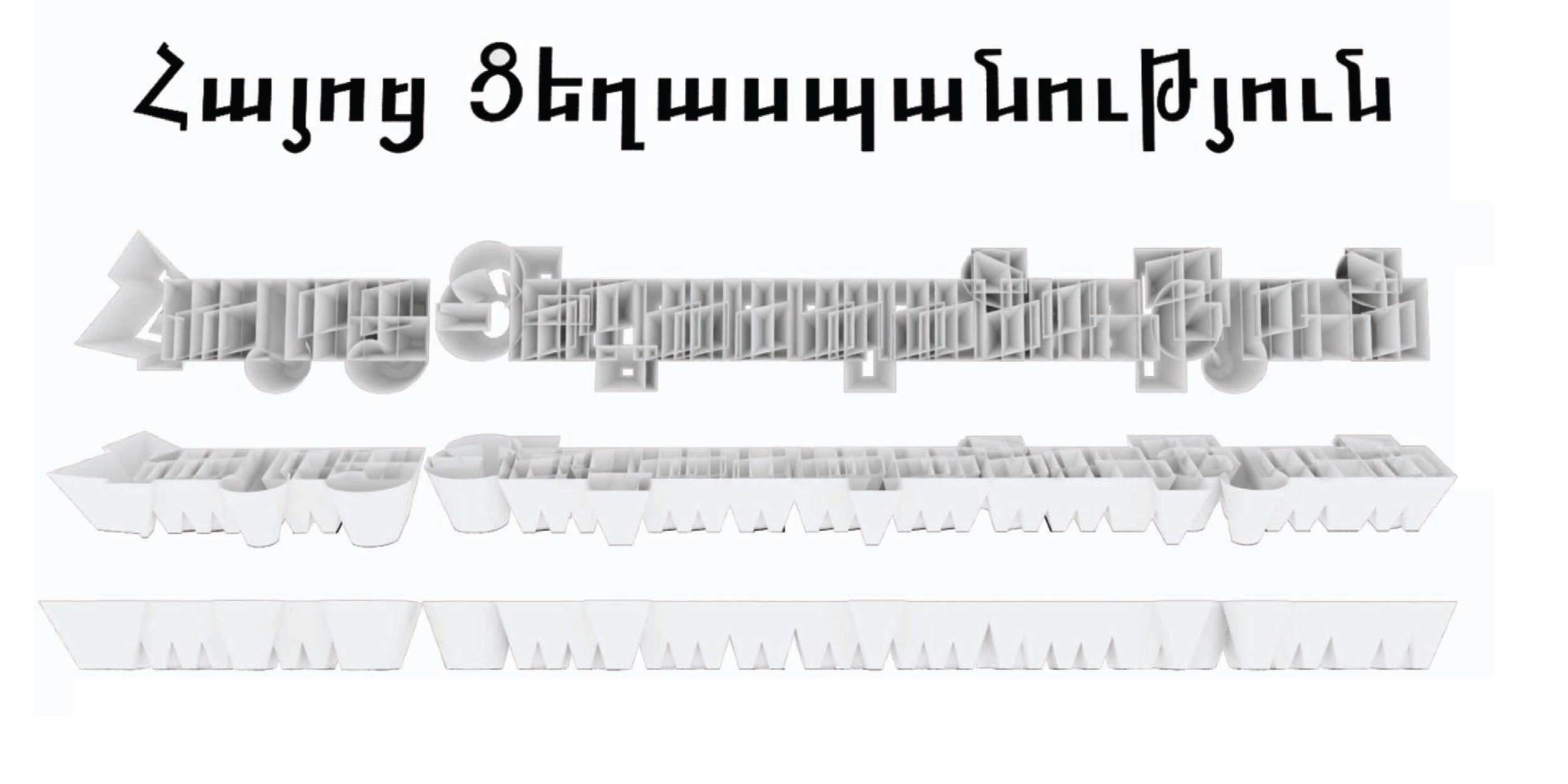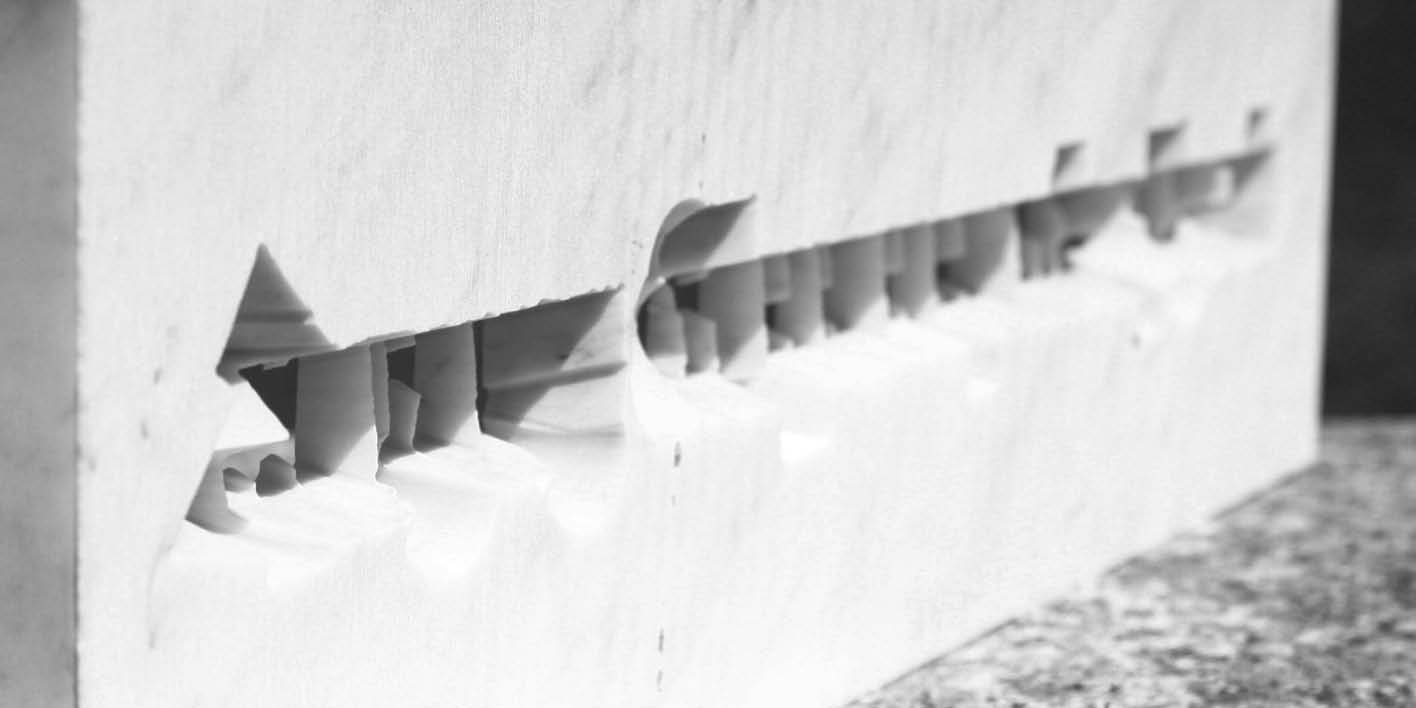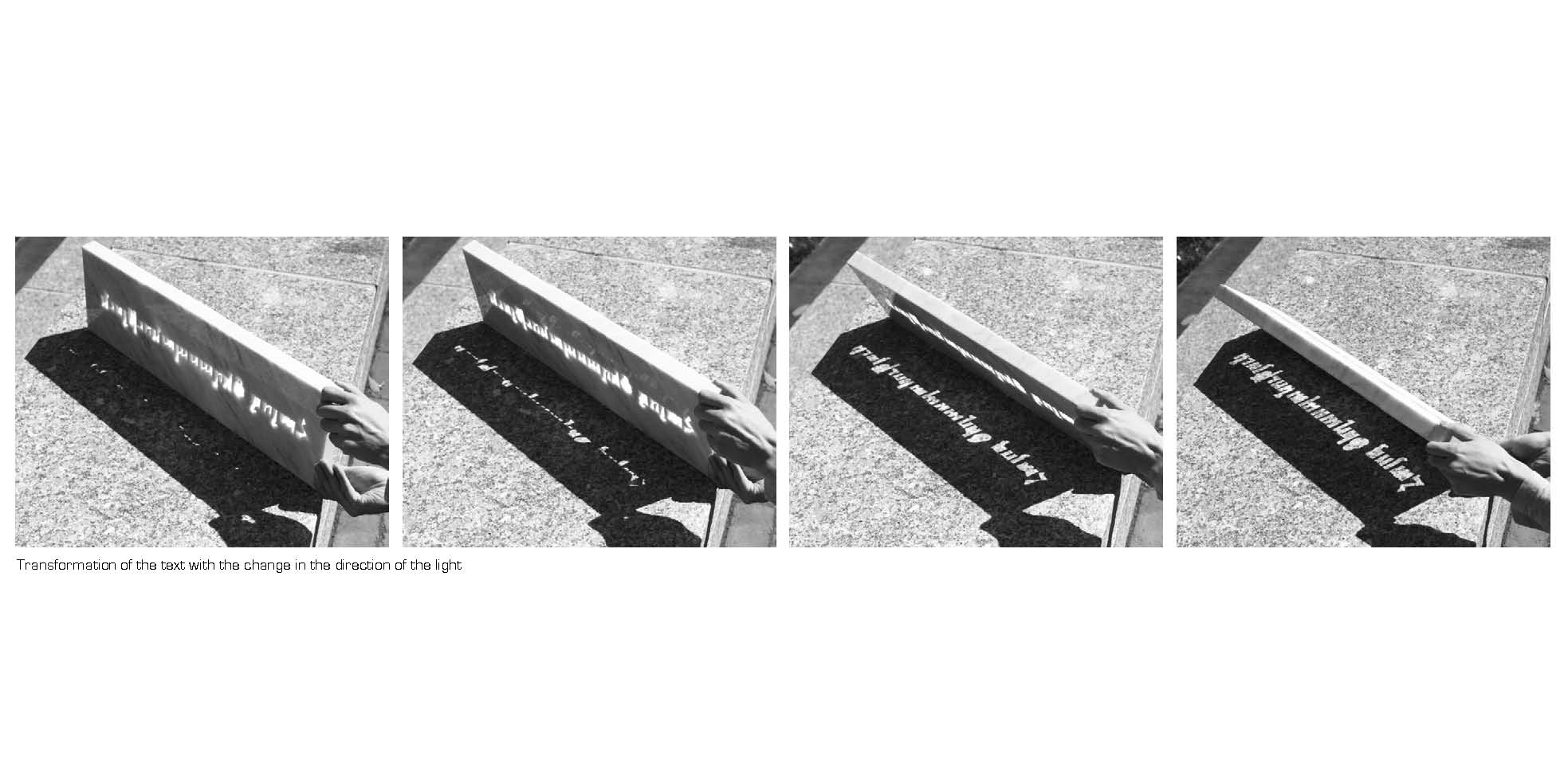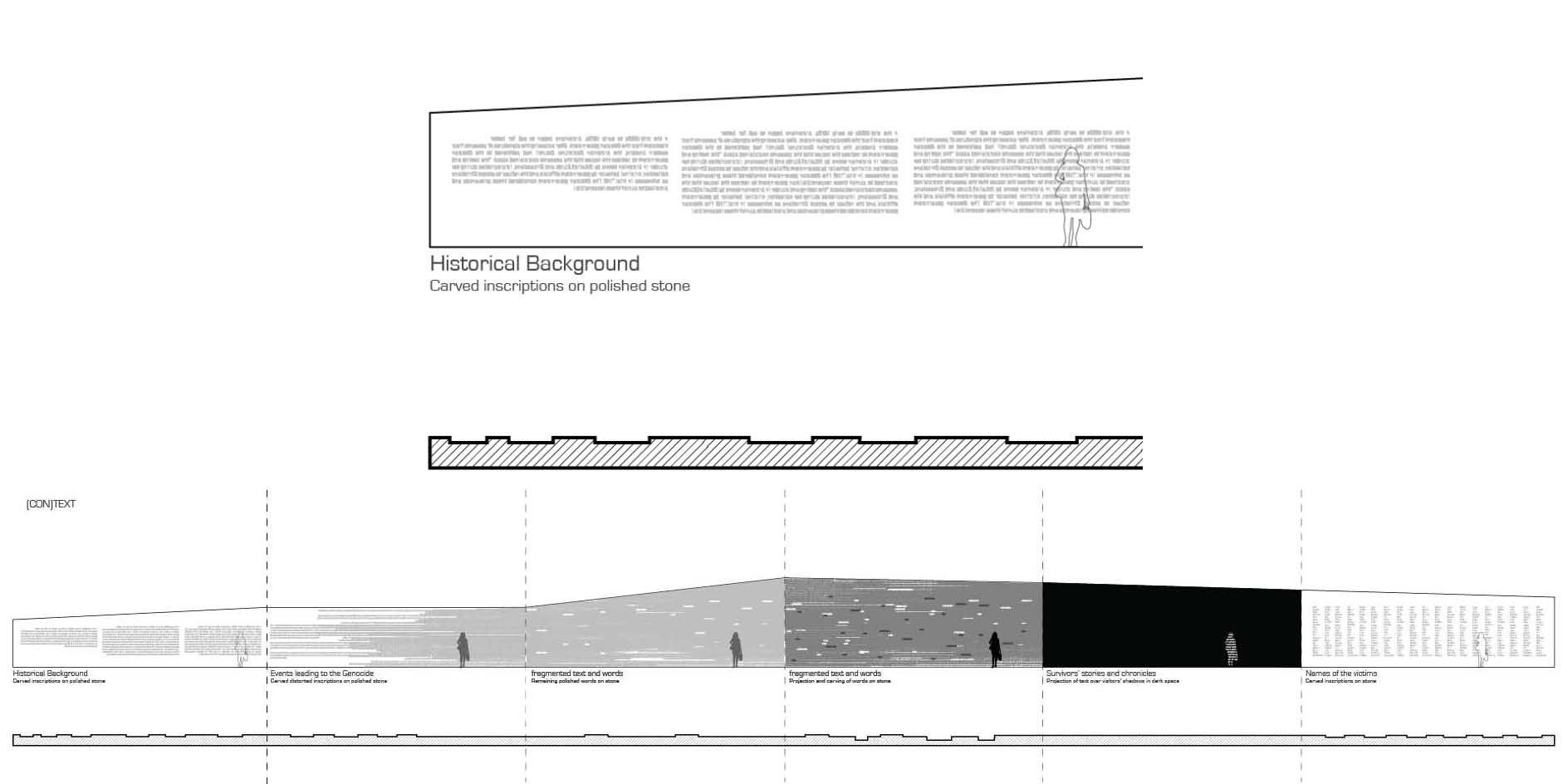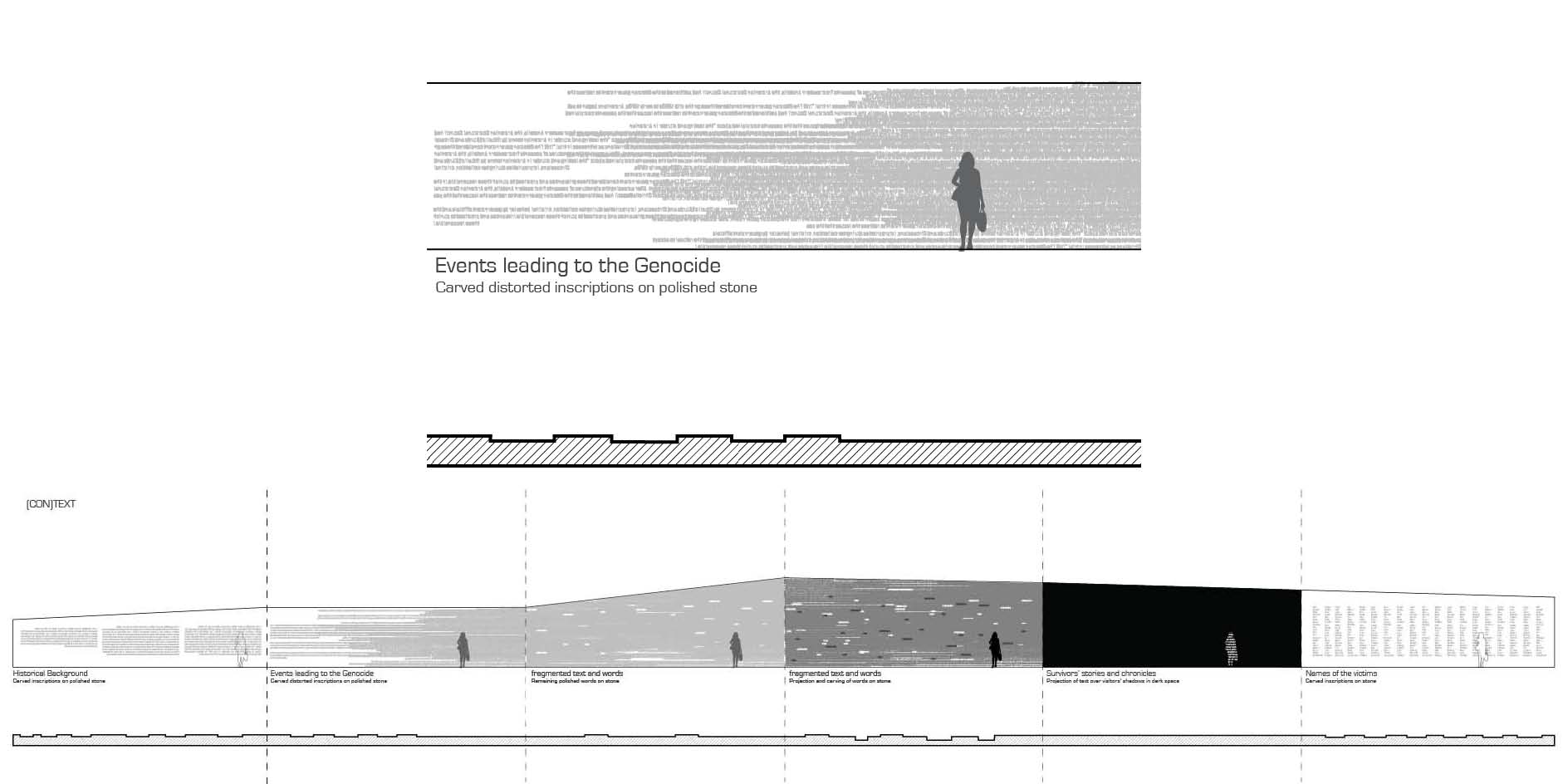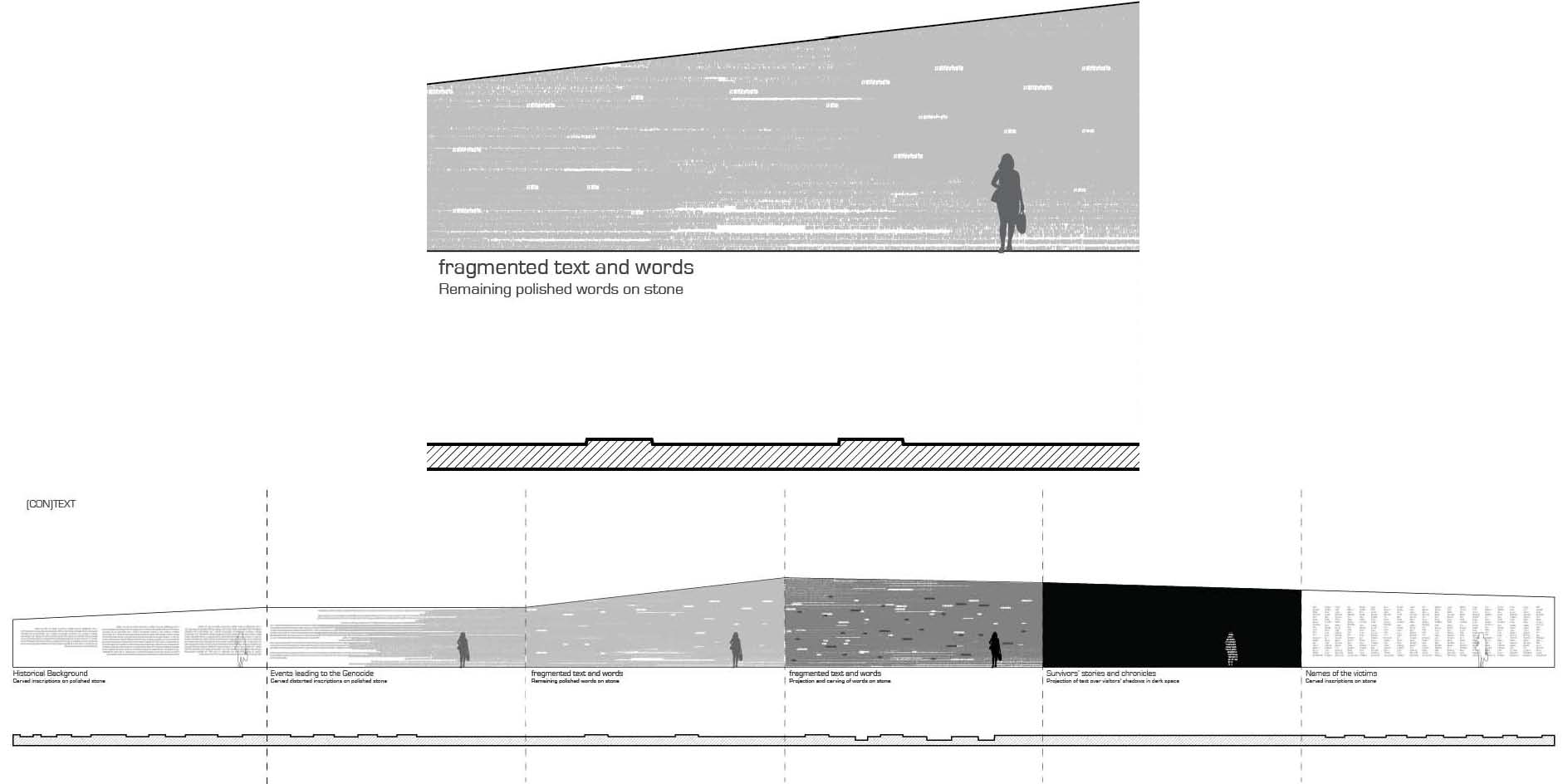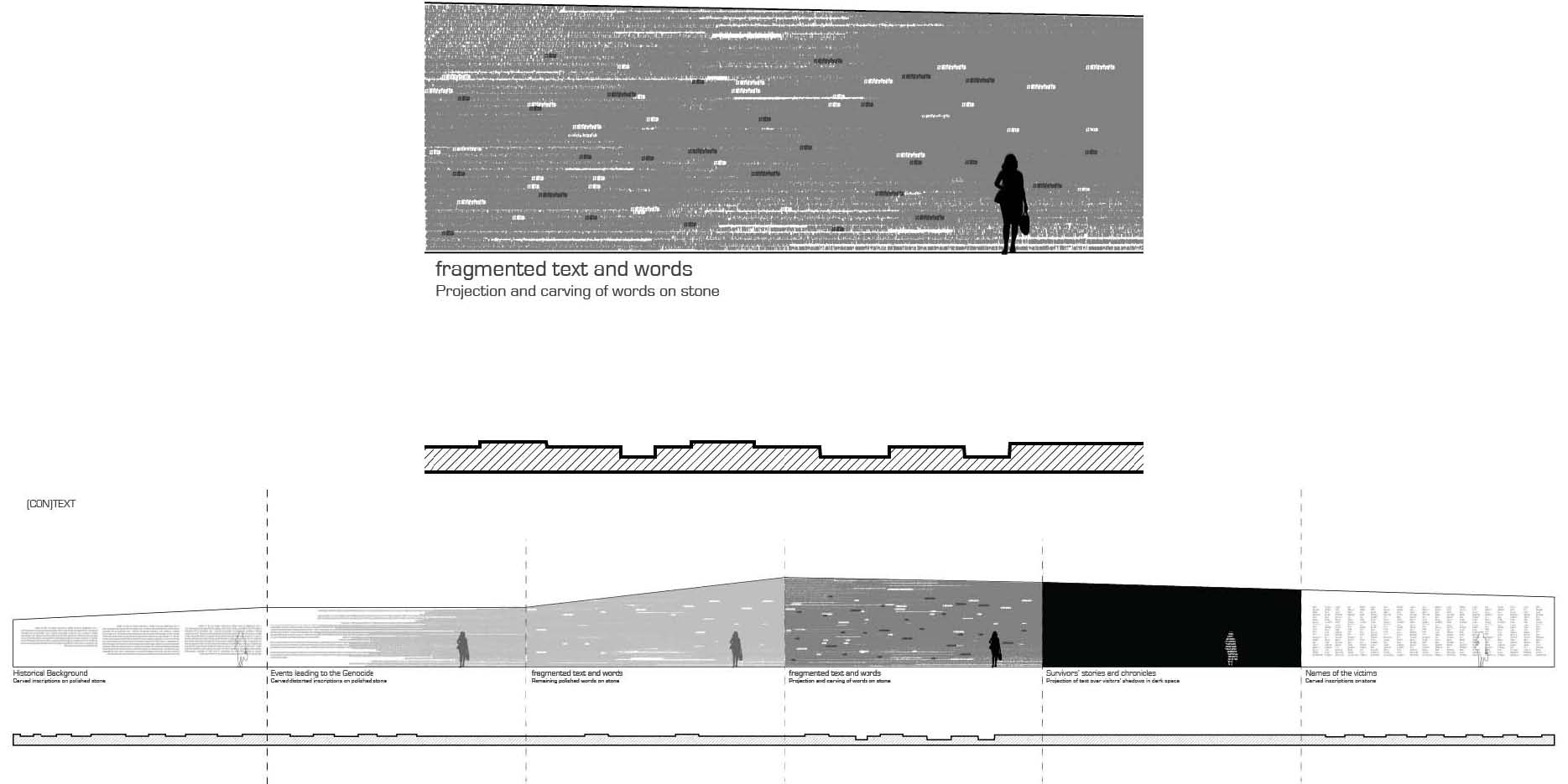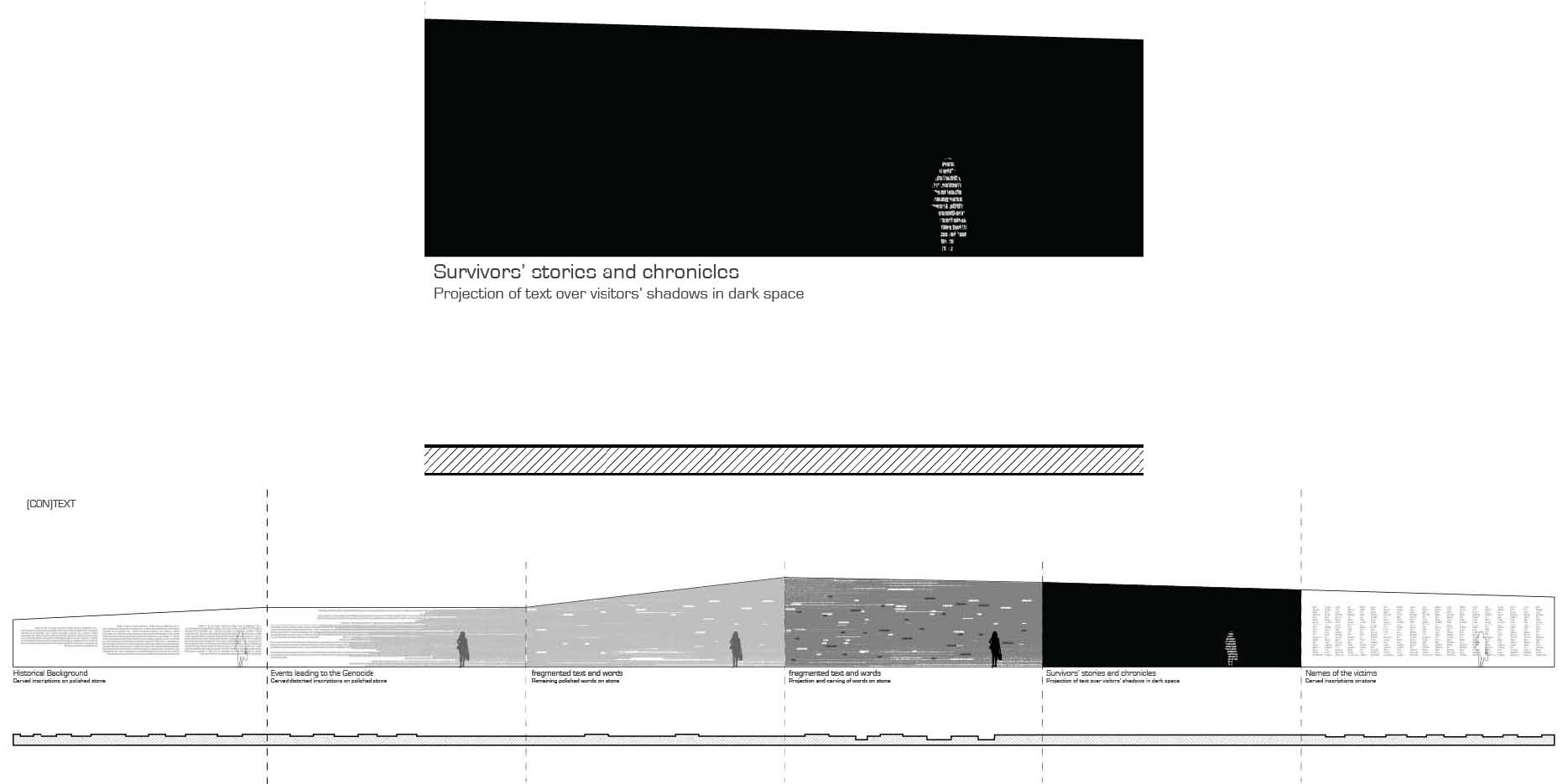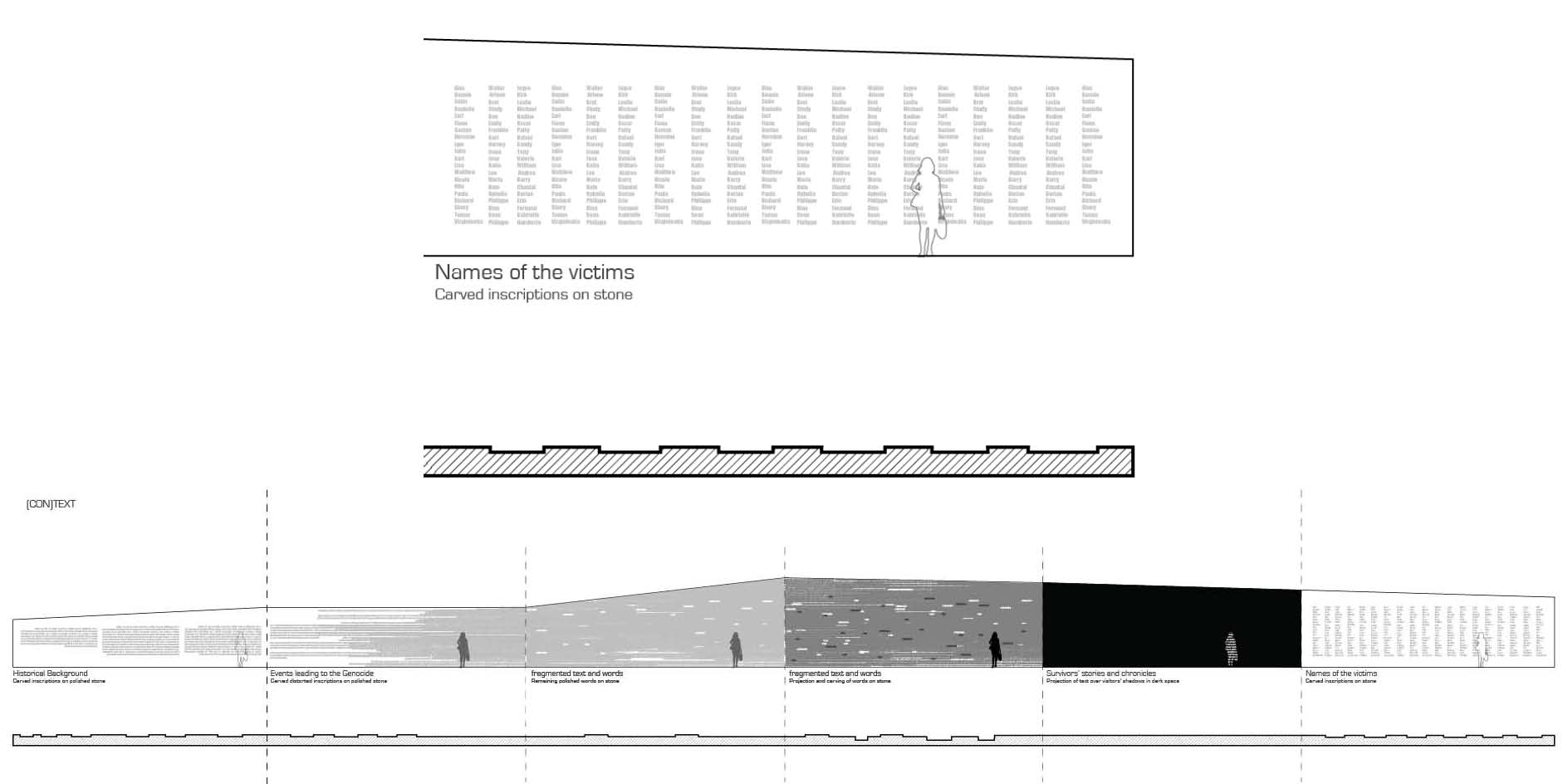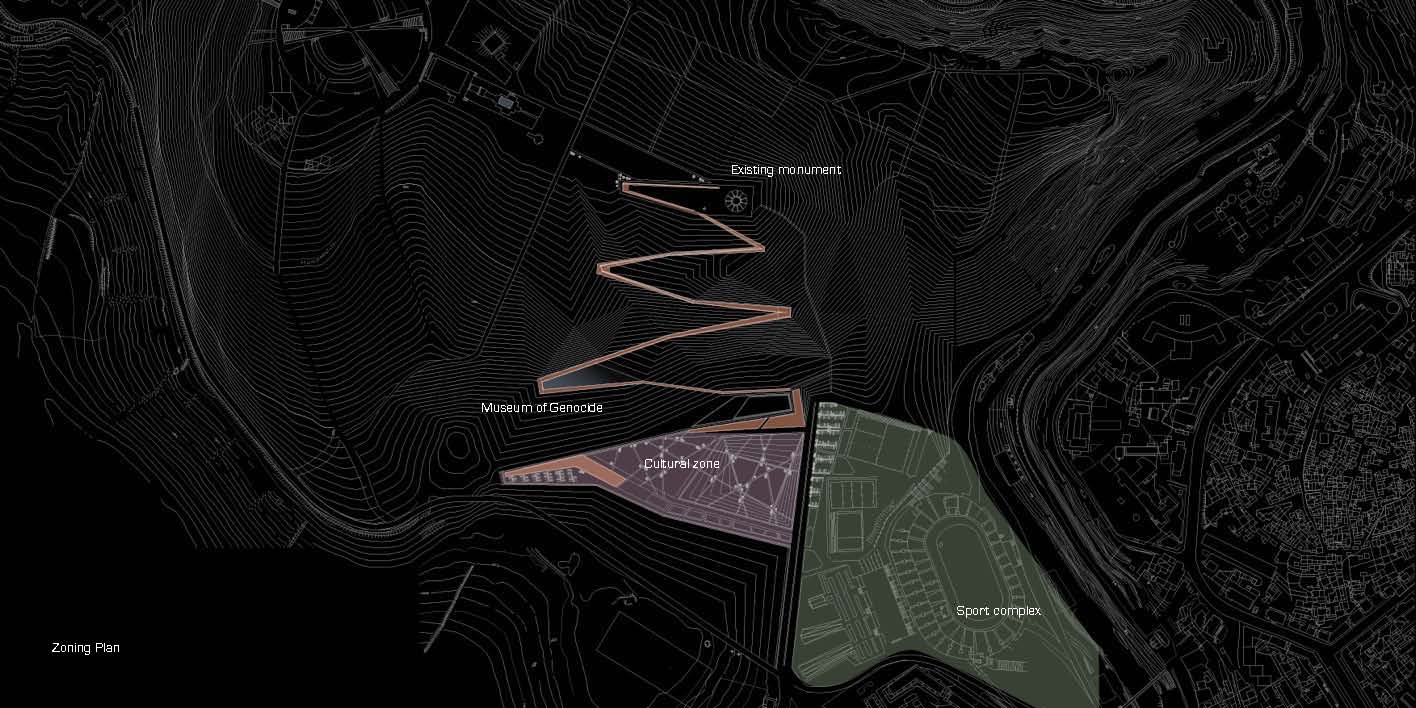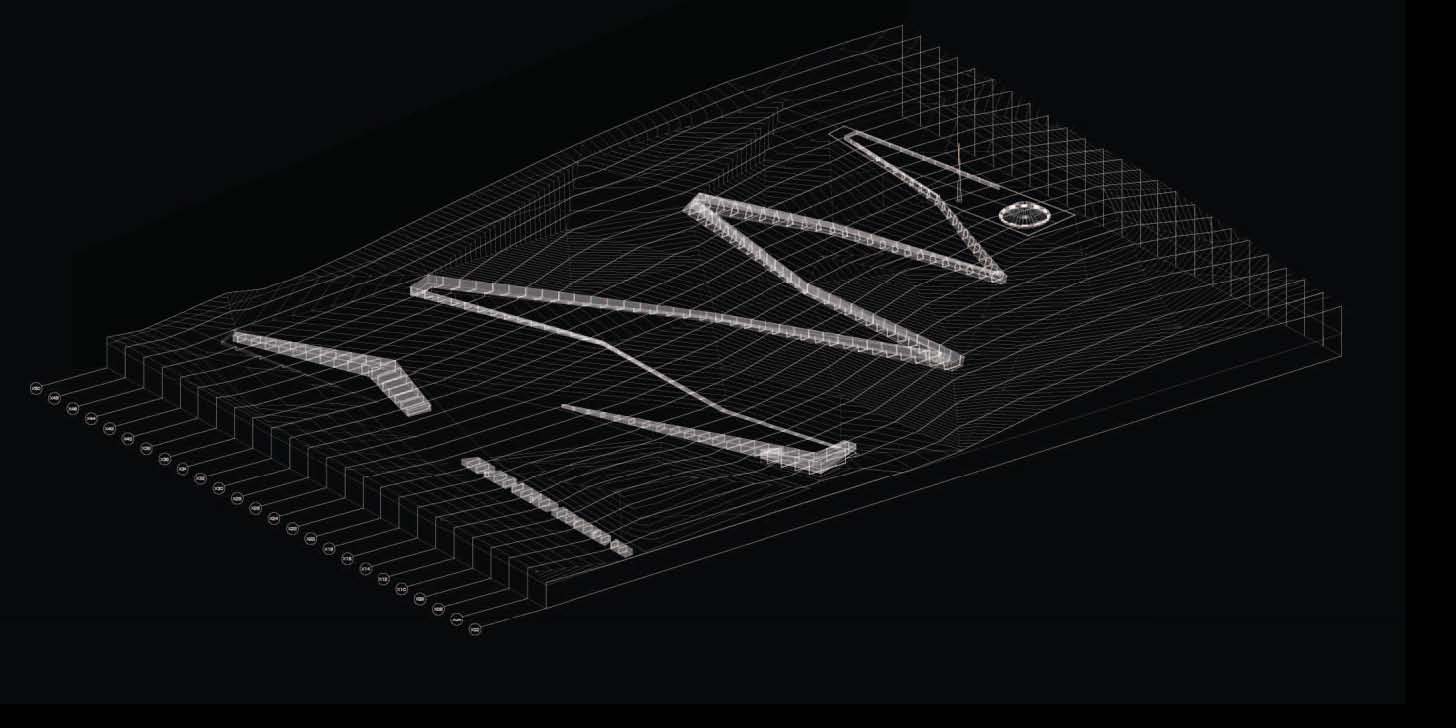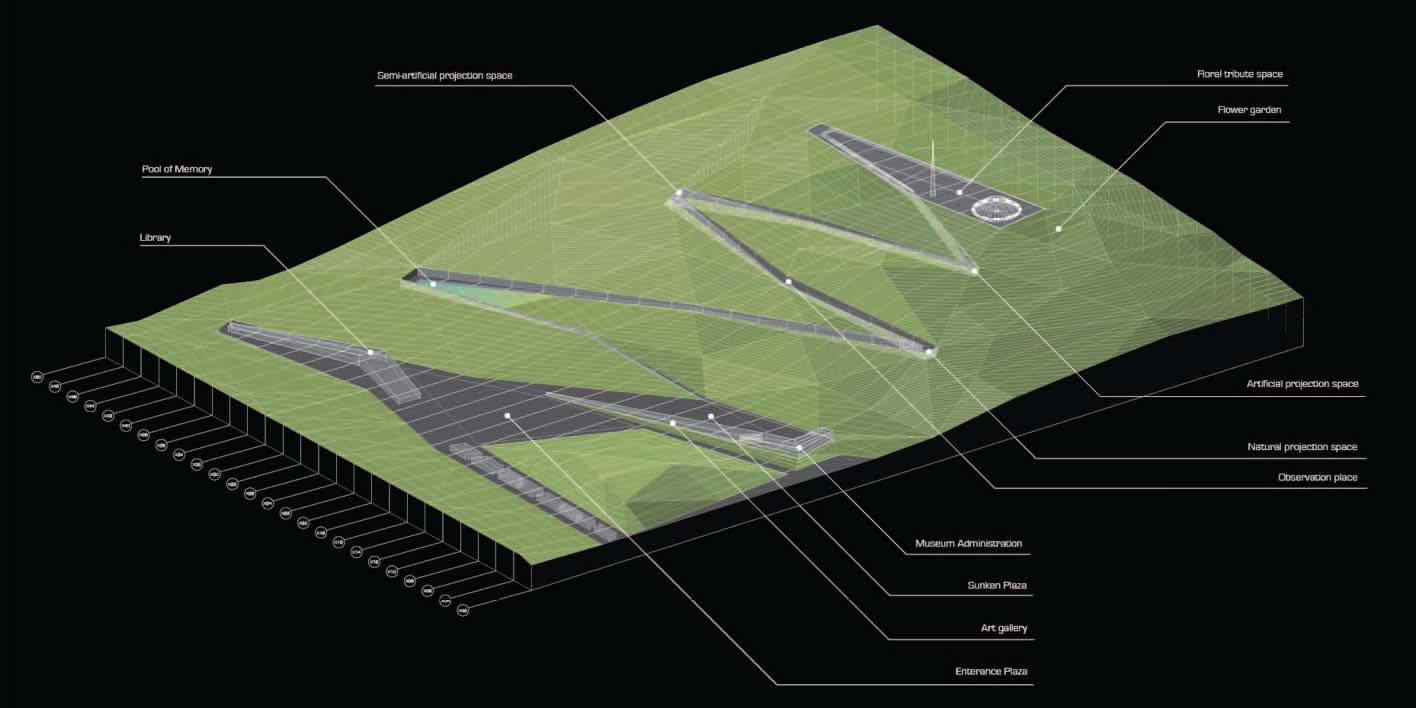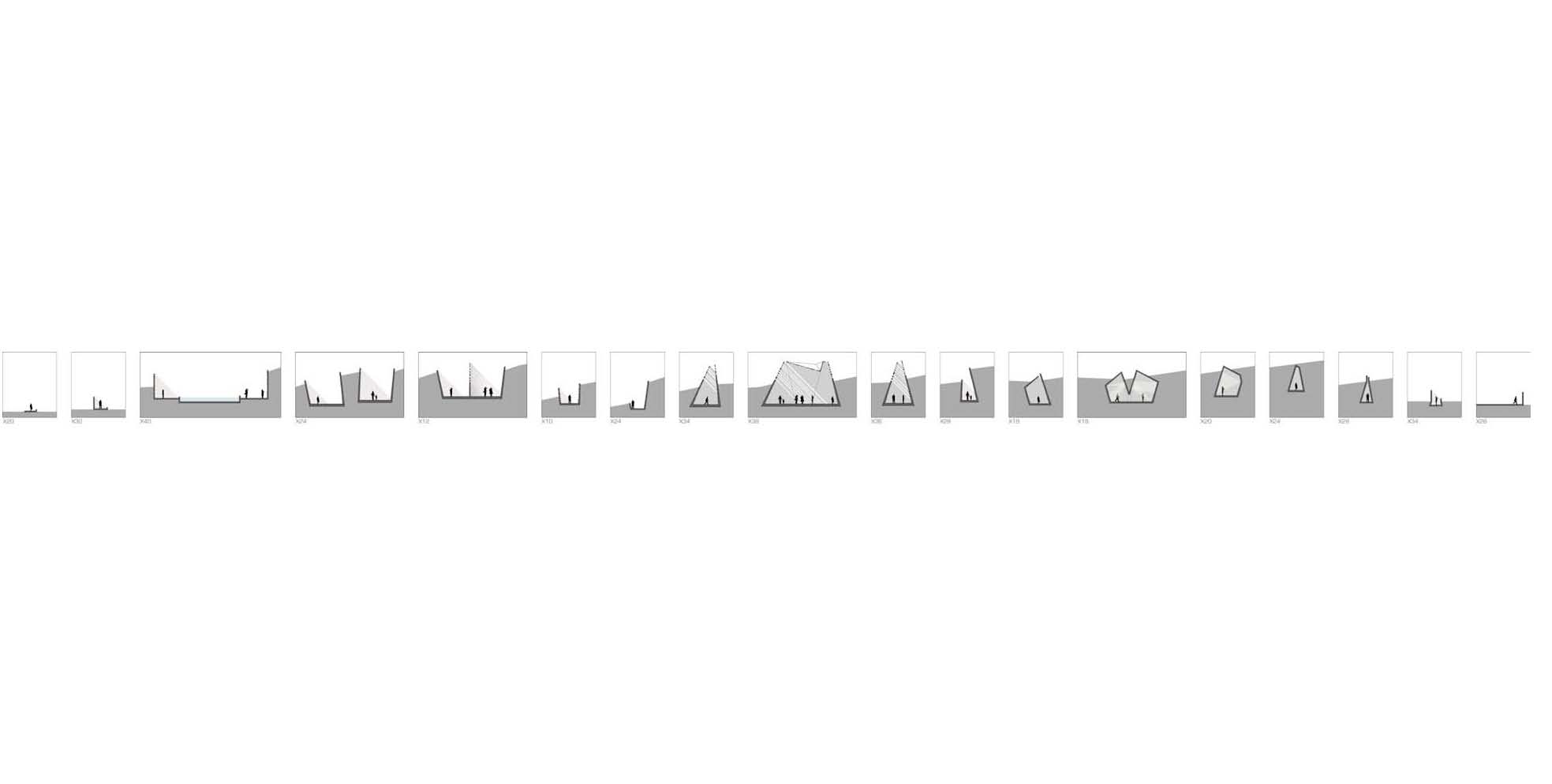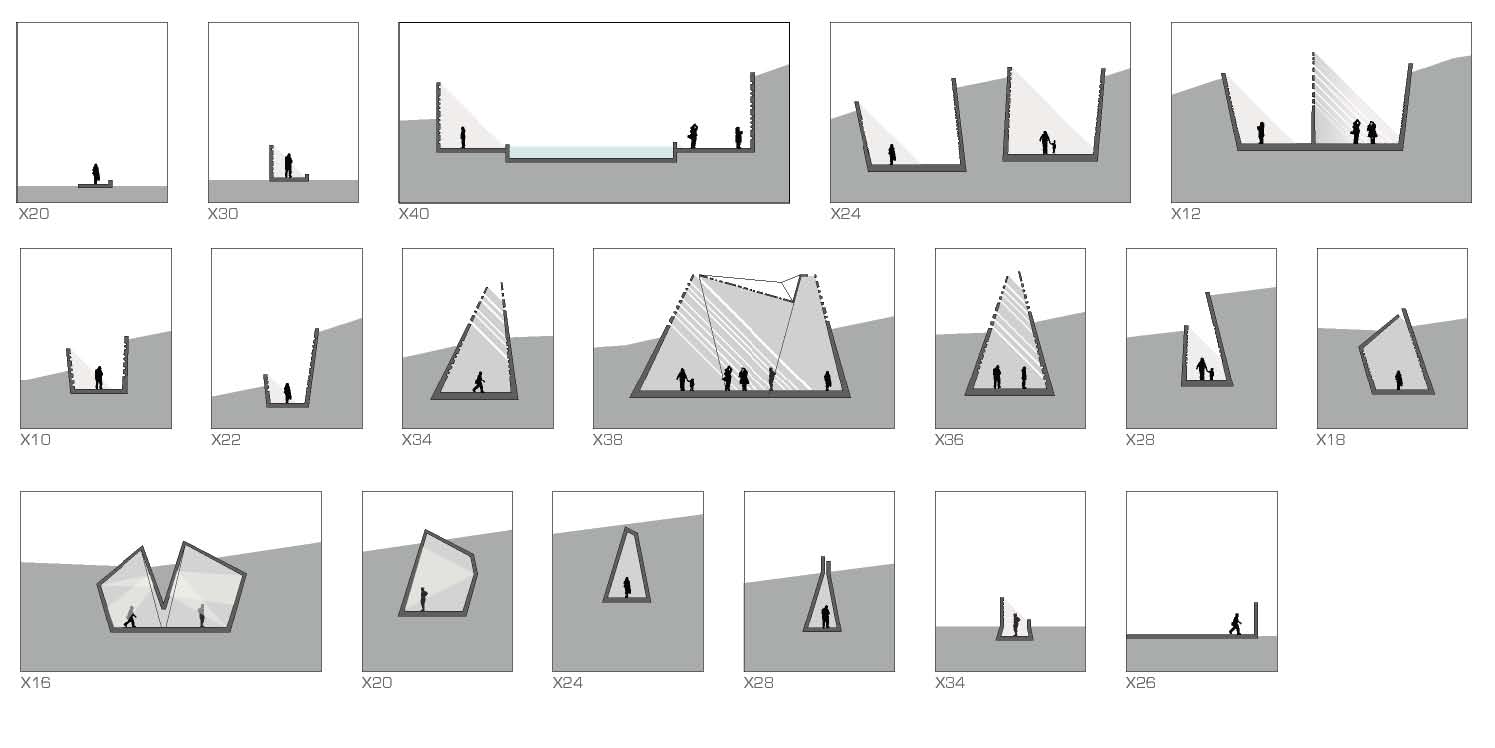CASTING.CHRONICLES: A Museum Without Artifacts
CASTING.CHRONICLES is a museum of Armenian genocide, which is currently considered an extension to the existing memorial in Yerevan, Armenia, commemorating the Armenian genocide in 1915. The intent of the project here is to exhibit these ‘memories’ and ‘absences’ and illustrate how much their ongoing existence has been, as it would be, contingent upon individuals - something that is distinctive to Amenian culture and civilization. As a museum without artifacts, what is exhibited here is mainly information or text, consisting of some remaining documents, survival stories and chronicles, and victims’ names and related events. Focusing on techniques of representation, the project uses projection as an alternative method of exhibition.
INCISIONS AND INSCRIPTIONS
The project began with a series of studies aimed at utilizing natural and artificial light towrds projection the projection of information. A first study took an interest in the Armenian Alphabet as its starting point, accepting that text and books are important aspects of Armenian culture. Taking advantage of the visitors’ presence in space, one study explored projecting information within visitors’ shadows. White light is projected with one projector, and white text with a second projector simultaneously on the same surface. The text is rendered visible only when the white light from the first projector is blocked by a person - it becomes legible in the shadow.
A second study continued the use of text, but investigated the use of natural stone as a medium and carved projection screen in the pursuit of projections through natural sunlight. Preparatory research mapped the incident angle of the sun for specific days in Yerevan, and derived a geometry for openings cut in stone that would allow sunlight to penetrate only at specific times and for pre-defined periods during the day.
Tapered openings in stone prototypes were cut on a 6-axis robotic waterjet. In the museum context the cut openings would represent texts chosen by the curator. The tapering cuts result in areas of carved out overlap that distort the readability of inscriptions on the stone itself, but allow the text to be read when sunlight shines through the cut outs.
The choice of stone as a material through which light projection is transformed into legible information is a reference to the widespread use of stone in Armenian architecture. The study seeks to transform our perception of the traditional material stone by manipulating it with 21st century fabrication technology such as industrial robots and numerical control technologies.
The digitally crafted carving technique allows for a time-based curatorial strategy where portions of text will be visible during certain pre-determined times. At other times light might still penetrate through the carved out openings, but the complete image of the text may be hidden from view, and therefore its meaning is suspended.
Exploiting the earlier studies with incisions, inscriptions and excavation, the architecture of the museum is read as a continuous path inscribed in the landscape. The path begins on the edge of the site immersing itself into the ground as it reaches its destination - the existing monument on the top of the hill. The architectural typology of the “museum” here is reduced to what it has always desired to be: a path.
The path begins at the entrance plaza, growing into a wall, a space, and finally an immersed tunnel that arrives at the monument. At every turn, there is a different environment that explores concepts of reflections, projection and commemoration. The carvings and inscriptions use both the quality and characteristics of the material. The museum walls are made of Basalt, a locally available stone. The inscriptions are cut into the stone walls that are oriented towards east and west at different moments, allowing direct sunlight on the surface.
Aside of the natural light projection through inscriptions, there are at least two new type of artificial projection spaces, engaging the visitors, the subject of the museum, in the absence of objects. The first method uses the presence of the visitors to project text onto their shadows. The existence of the information here relies solely to the presence of the visitor. The second space uses two sides of a stone wall in the space to project text. The visitor’s body here in this space becomes an obstruction.




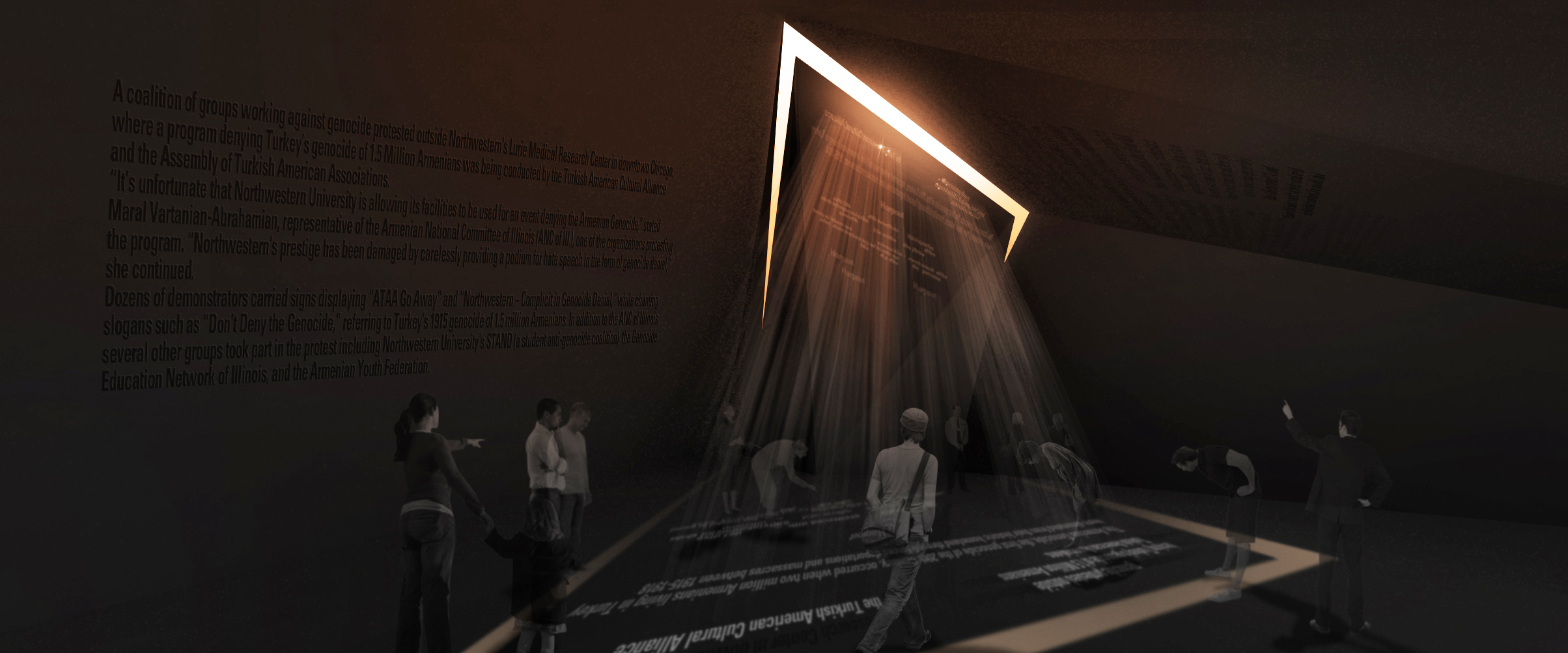
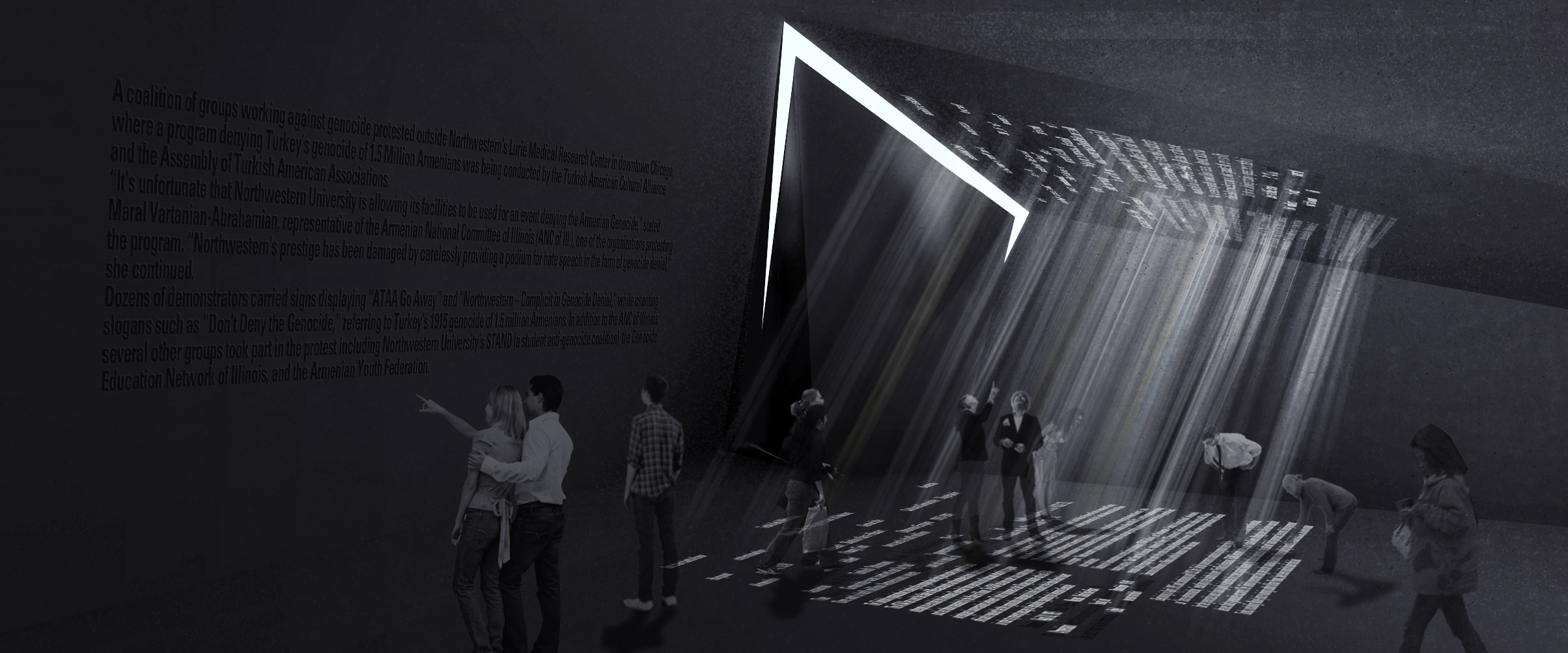






Arriving at the monument on top, visitors view the monument as the last piece in the museum. There is a floral garden behind the monument where visitors can pick flowers and pay tribute by dropping flowers into a waterway that runs along the walls from the monument platform all the way down to the pool of memory where all the flowers are collected. Every visitor therefore leaves her trace into the space itself.
Project in collaboration with Jaemin Ha.

